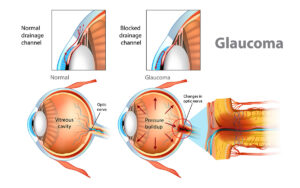RLE might be the vision correction option you haven’t heard about—but it could be the perfect fit if LASIK isn’t for you.
If you’ve looked into vision correction, you’ve probably heard about LASIK and cataract surgery. But what if you’re not a good candidate for LASIK—and you’re not old enough for traditional cataract surgery? That’s where RLE, or Refractive Lens Exchange, comes in.
RLE is a safe, modern solution for people who want lasting visual freedom, especially those in their 40s and beyond who are dealing with reading glasses or presbyopia. In this blog, Anaheim Eye breaks down what RLE is, how it compares to LASIK and cataract surgery, and why more people are considering it for long-term clarity.
What Is Refractive Lens Exchange (RLE)?
RLE is a vision correction surgery that replaces your eye’s natural lens with a clear, artificial intraocular lens (IOL)—just like cataract surgery. The difference? With RLE, the lens is replaced before it becomes cloudy.
RLE is especially ideal for:
- People over 40 with presbyopia (age-related farsightedness)
- Patients with high hyperopia (farsightedness) not suitable for LASIK
- Those who want to prevent cataracts from developing in the future
The goal is the same: to reduce or eliminate your need for glasses or contact lenses.
Think of RLE as hitting fast-forward on your future—you’re getting the benefits of cataract surgery before the cataract even forms.
How Is RLE Different from LASIK?
While both LASIK and RLE aim to correct your vision, they work in totally different ways.
LASIK:
- Reshapes the cornea using a laser
- Best for younger patients with mild to moderate prescriptions
- Doesn’t address presbyopia or future cataracts
RLE:
- Replaces the eye’s natural lens
- Ideal for older patients or those with complex prescriptions
- Prevents cataracts down the road
In short, LASIK is great for younger eyes. RLE is better for aging eyes or anyone looking for a longer-term solution to visual changes.
How Does RLE Compare to Cataract Surgery?
The procedure for RLE is nearly identical to cataract surgery—except it’s elective and done before the lens gets cloudy.
Here’s what’s similar:
- Outpatient procedure, usually 15–20 minutes per eye
- Local anesthesia and quick recovery
- Uses advanced intraocular lens implants
- Minimal downtime
The main difference? With RLE, you’re choosing to have the lens replaced before you “need” it due to cataracts. It’s about being proactive with your vision.
RLE gives you crystal-clear vision—without waiting for cataracts to cloud it.
What to Expect from the RLE Procedure at Anaheim Eye
At Anaheim Eye, we start with an in-depth consultation to evaluate your eyes and your goals. If RLE is right for you, we’ll:
- Measure your eyes for lens customization
- Discuss premium IOL options (including multifocal and toric lenses)
- Walk you through the step-by-step procedure
- Provide detailed pre- and post-op instructions
Most patients are amazed at how quickly they can return to normal activities—and how much better they see right away.
Conclusion
RLE isn’t just a solution—it’s a strategy. It’s for people who want to invest in their vision now and avoid common age-related problems down the road. If you’re tired of juggling multiple pairs of glasses or you’ve been told you’re not a LASIK candidate, RLE could be your best next step.
At Anaheim Eye, we specialize in helping you choose the vision correction option that fits your lifestyle, goals, and eye health. Let’s talk about whether RLE is right for you.
FAQs
Is RLE painful?
Not at all. Just like cataract surgery, RLE is done with local anesthesia. You’ll be comfortable throughout the procedure.
Will I still need glasses after RLE?
Many patients don’t! Depending on the lens you choose, RLE can correct for distance, near, or both.
Is RLE permanent?
Yes—once your natural lens is replaced, it won’t need to be replaced again, and you won’t develop cataracts in that eye.
Is there an age limit for RLE?
RLE is most commonly recommended for patients over 40, but suitability is based on your eye health and vision goals, not just age.




